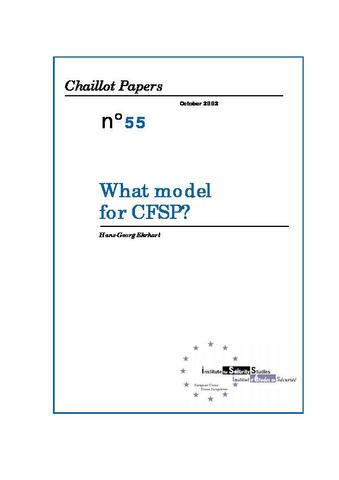You are here
What model for CFSP?

The principal question of this Chaillot Paper is what guiding model (Leitbild) the EU should adopt with regard to CFSP. Facing the challenges of the post-post-Cold War era, the traditional models – the EU as a civilian, a military or a normative power – no longer seem appropriated. This paper suggests that the EU’s external activities should be based on a ‘cooperative security provider’ model, embracing civilian, military and normative elements in a comprehensive approach to peace and security. With the development of ESDP as part of CFSP and its comprehensive approach to security, the EU has defined its own specific framework for external action that is now in the process of refinement. The prevailing rationale of CFSP is without doubt cooperative and prevention-oriented but many shortfalls persist. Harmonisation of perceptions and common assessments in particular are indispensable, but will only be achieved step by step through ongoing cooperation within the new structures. As to the effectiveness of operations, lack of coherence is still the most important weakness of CFSP. Divergences between member states and the complexity of decision-making structures both remain major obstacles to be overcome if the EU is to become a serious international actor. To contribute effectively to international stability and security in the age of globalisation, the EU needs to develop its various policies on the basis of a commonly agreed global vision. The Union and its member states should therefore enhance their efforts to follow a comprehensive security approach that combines civilian and military instruments, and focuses on cooperation and prevention. Only if the EU manages to integrate its policies and its means into a common project based on internationally accepted norms and values will the cooperative security provider model be able to create a distinctive European security identity.